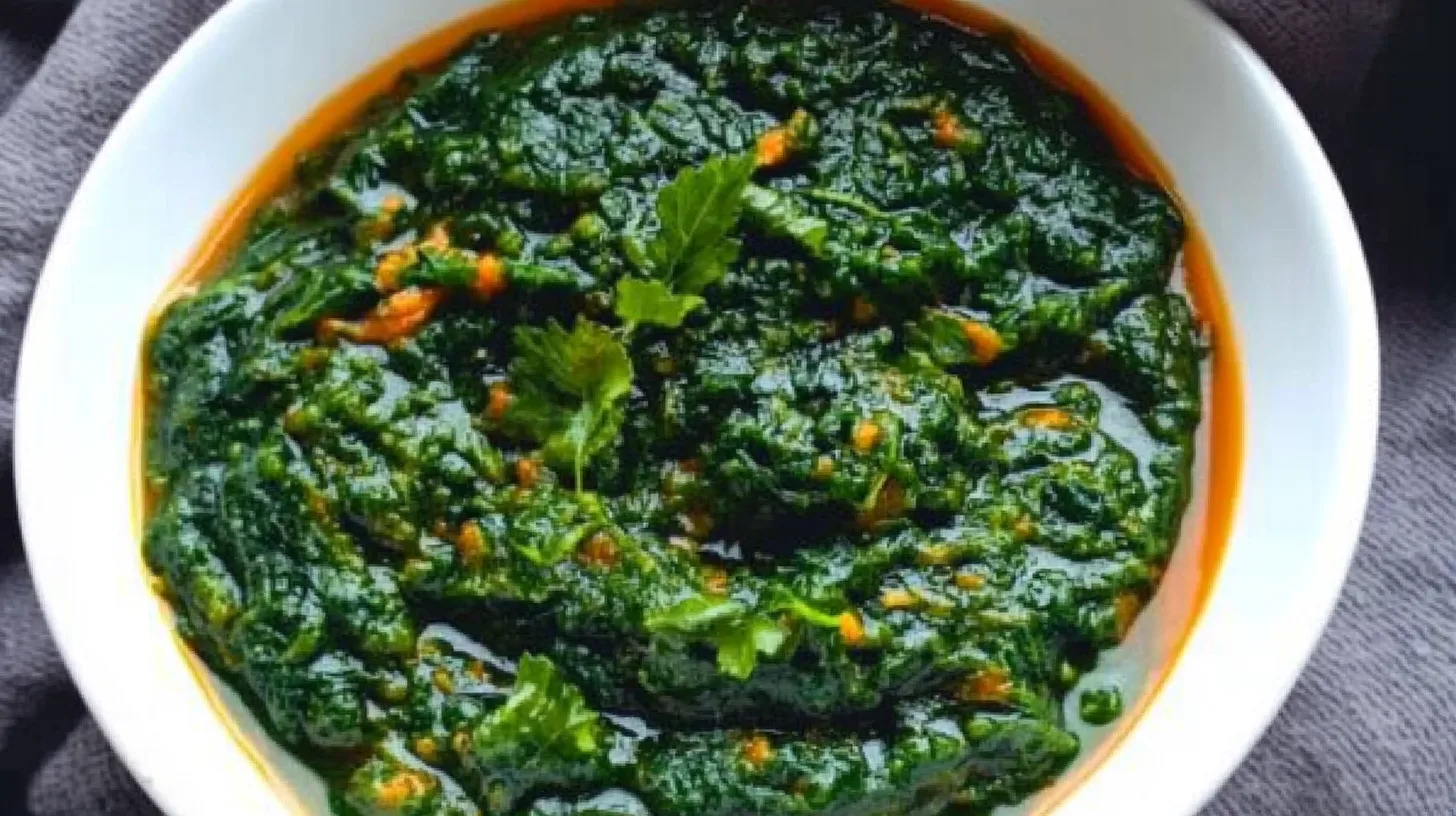Ever thought pumpkins were just for pies and jack-o’-lanterns? Think again! These often-overlooked leaves are one of the most underrated superfoods out there. Packed with nutrients and full of flavor, they can transform your everyday dishes into something extraordinary. From hearty soups to vibrant stir-fries, they’re a must-try for adventurous foodies. Let’s explore everything you need to know to get started, from their health benefits to tips on growing, cooking, and preserving them.
Table of Contents
What Are Pumpkin Leaves?
Botanical Description and Key Characteristics
Also known as “ugu” in some cuisines, these greens grow from the pumpkin vine. They are deep green with a slightly fuzzy texture and serrated edges. Their sturdy structure makes them ideal for a variety of cooking methods, including boiling, steaming, and frying.
Growth Patterns and Unique Textures
Pumpkin plants thrive in warm climates and produce large, spreading greens that play a vital role in photosynthesis. Younger leaves are tender and perfect for light cooking, while older ones may require additional preparation to soften their fibrous texture.
Flavor Profile and Common Uses
The taste of these greens is a delightful mix of earthy and slightly nutty, with a hint of bitterness that dissipates when cooked. Their versatility makes them a favorite in many cuisines, where they’re used in soups, stews, stir-fries, and even smoothies.
For inspiration, try using pumpkin leaves in a delicious Old-Fashioned Vegetable Beef Soup. This hearty recipe combines wholesome vegetables with tender greens for a flavorful meal.
Culinary Uses Around the World
African Recipes
In many African countries, these greens are a dietary staple. A standout dish is Nigerian Egusi soup, a hearty stew made with ground melon seeds, spices, and tender greens. Tanzanian cuisine also features them in coconut milk-based stews, adding a creamy richness that complements their flavor.
For a modern twist, consider pairing them with Garlic Parmesan Chicken Pasta. The garlic and parmesan create a bold contrast that enhances the greens’ natural flavor.
Asian Dishes
In Southeast Asia, these greens often appear in stir-fries and curries. Thai curries, for instance, pair them with coconut milk and chili paste, creating a vibrant and balanced dish. Similarly, they’re a key ingredient in Filipino Ginataang Kalabasa, a comforting squash and coconut milk recipe.
Another complementary recipe is Katsu Ramen, which pairs the greens with savory broth and crispy fried chicken for a delightful fusion of flavors.
Caribbean Specialties
The Caribbean’s love for bold flavors extends to these greens. In Jamaica, they’re used in pepperpot soup, a dish combining vegetables, salted meats, and spices. They’re also sautéed with garlic and onions as a simple yet delicious side dish.
For a lighter take, pumpkin leaves are sometimes sautéed with garlic and onions, creating a simple yet flavorful side dish. The adaptability of pumpkin leaves makes them a favorite among Caribbean home cooks.
Add a tropical element to your menu with Honey Garlic Glazed Salmon. The sweet and savory glaze beautifully complements the greens.
Nutritional Powerhouse: Why They’re Good for You
Essential Nutrients
These greens are packed with essential vitamins and minerals, including:
- Vitamin A: Supports healthy vision and immune function.
- Vitamin C: Boosts collagen production and immunity.
- Vitamin K: Promotes bone health and blood clotting.
- Calcium: Strengthens bones and teeth.
- Iron: Improves oxygen transport in the blood.
Antioxidants and Anti-inflammatory Benefits
Rich in antioxidants, they help neutralize free radicals, reducing the risk of chronic diseases like heart disease and diabetes.
High in Dietary Fiber
Fiber aids digestion, prevents constipation, and supports a healthy gut. It also helps regulate blood sugar levels, making these greens an excellent choice for managing diabetes.microbiome. Fiber also helps regulate blood sugar levels, making pumpkin leaves an excellent choice for people managing diabetes.
Preparing Pumpkin Leaves: Tips and Tricks
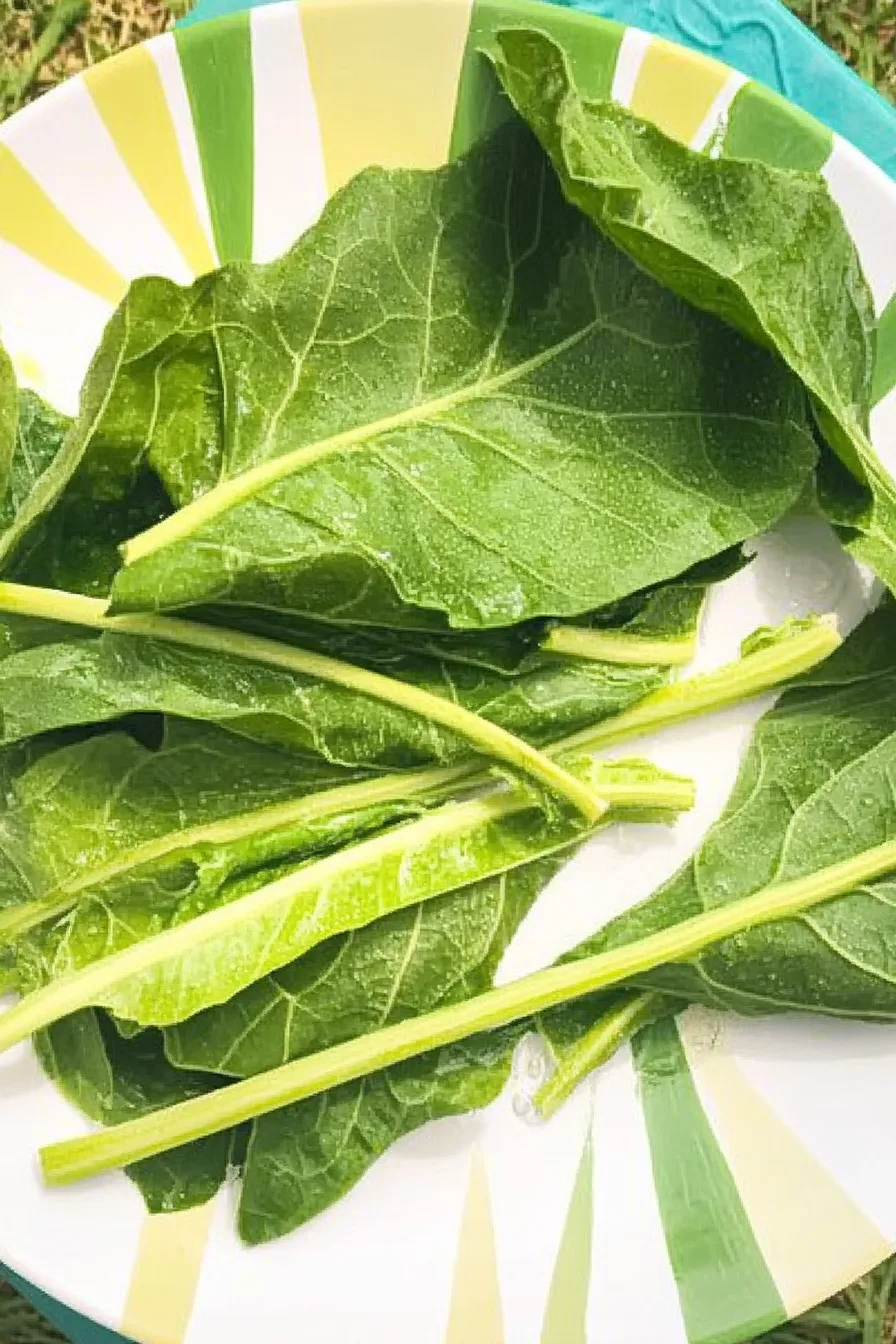
How to Harvest
To get the best flavor and texture, pick young, tender greens using clean scissors. Avoid damaging the main vine when harvesting.
Cleaning Techniques
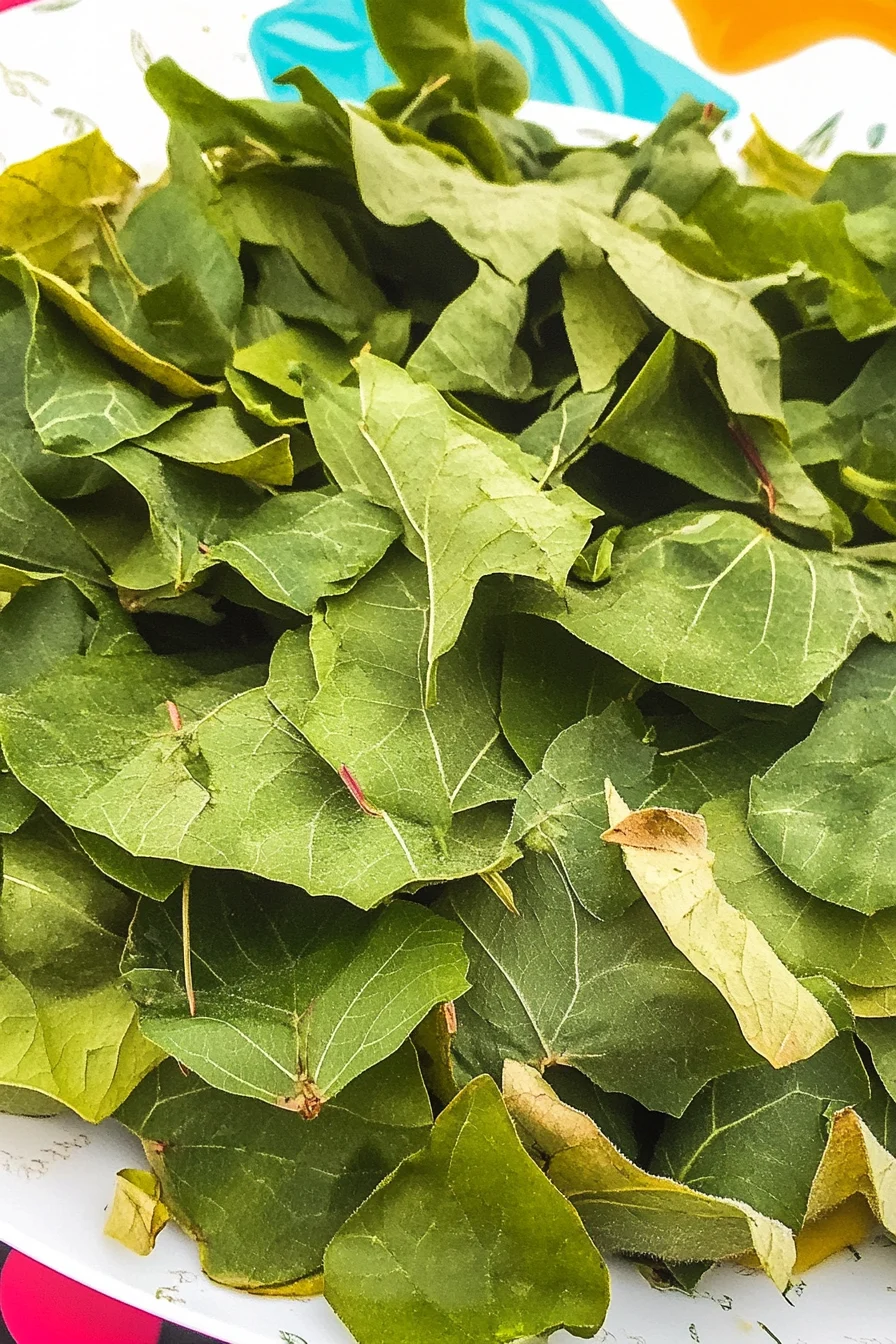
These greens often have a fuzzy surface that can trap dirt or insects. Rinse them under cold water, rubbing gently to remove debris. Soaking in salted water for a few minutes ensures thorough cleaning.
Cooking Prep
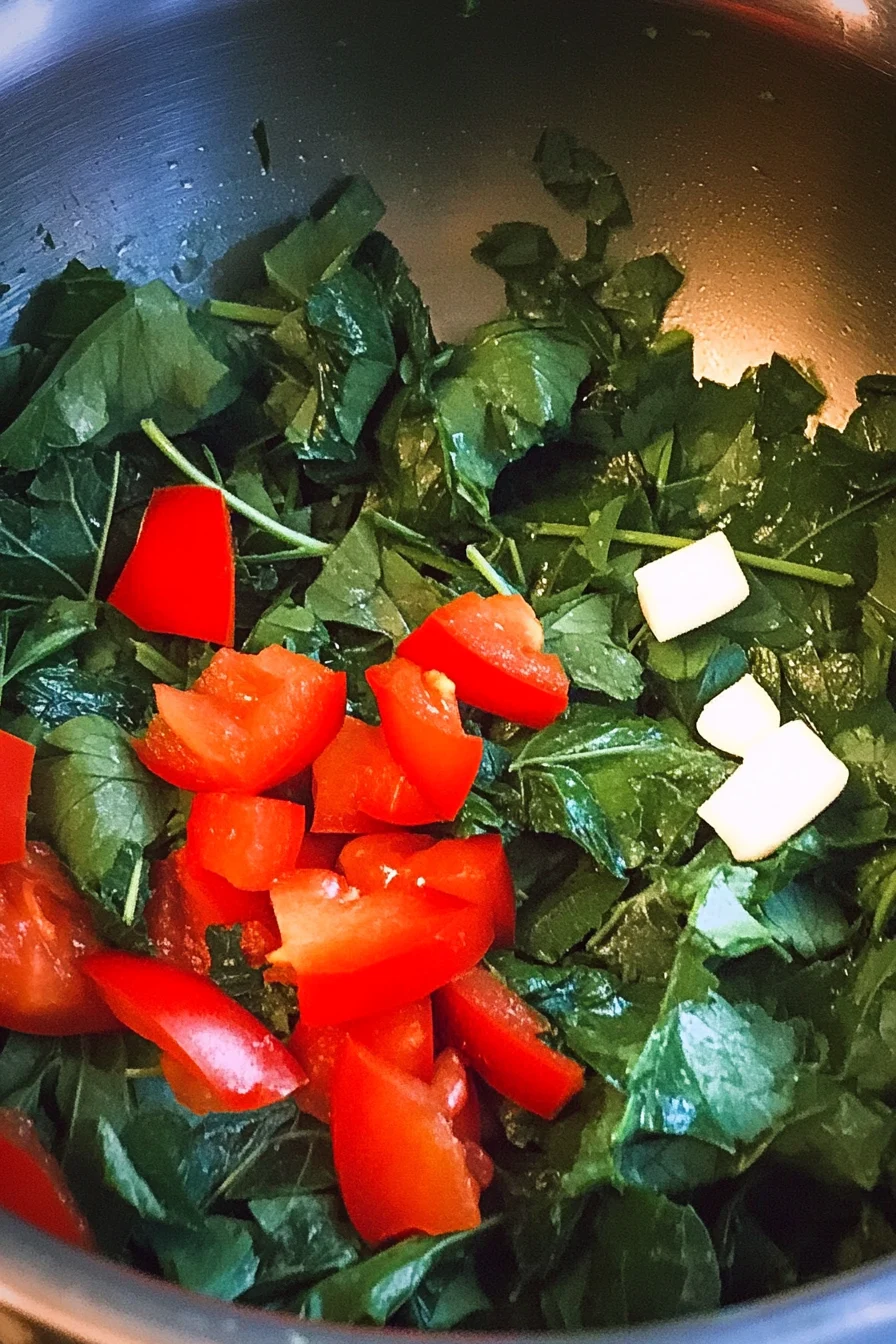
Blanching softens their texture and reduces bitterness. Boil them for 2–3 minutes, then transfer to an ice bath to lock in color and prepare them for stir-fries or soups.
Easy and Delicious Recipes
Stir-Fried Greens
Heat a skillet with oil, add minced garlic and onions, and sauté until fragrant. Toss in blanched greens, season with soy sauce, and cook for 5–7 minutes. Serve with steamed rice for a quick and flavorful dish.
West African Soup
Simmer these greens with tomatoes, onions, and spices. Add chicken or fish for protein, and let the flavors meld together for a rich, hearty soup.
Smoothie
Blend fresh greens with mango, pineapple, and coconut water for a refreshing, nutrient-packed smoothie. Add honey or banana for sweetness.
Growing Your Own Pumpkin Leaves
Best Pumpkin Varieties
Choose varieties like Seminole, Jamaican, or Green Striped Cushaw for their tender, flavorful leaves. These plants are not only easy to grow but also yield plenty of leaves throughout the season.
Planting Tips
Pumpkins thrive in full sun and well-draining soil. Enrich the soil with compost and plant seeds after the last frost. Water the plants consistently, but avoid overwatering to prevent root rot.
Maintenance
Prune older, less productive leaves to encourage new growth. To protect your plants, consider natural pest deterrents like companion planting with herbs like basil and marigolds.
Storing and Preserving Pumpkin Leaves
Refrigeration
Wrap leaves in a damp cloth and store them in a sealed bag in the fridge. They’ll stay fresh for up to 5 days.
Freezing
Blanch leaves, then freeze them in airtight bags. Properly stored, they can last for up to six months.
Dehydration
Dry pumpkin leaves in an oven or dehydrator until crisp. Crumble into powders to use as a seasoning or nutritional booster.
FAQs About Pumpkin Leaves
What can you do with pumpkin leaves?
Pumpkin leaves are incredibly versatile. You can use them in soups, stews, stir-fries, and even smoothies. They’re perfect for adding a nutritional boost to dishes, and they work well as a substitute for other leafy greens like spinach or kale.
How to prepare pumpkin leaves?
Preparing pumpkin leaves involves a few key steps:
Harvest young, tender leaves for the best texture and flavor.
Wash them thoroughly to remove dirt and fuzz.
Blanch the leaves in boiling water for 2–3 minutes to soften them and reduce bitterness.
Once prepped, you can sauté, steam, or add them directly to your favorite recipes.
Is it good to eat pumpkin leaves?
Absolutely! Pumpkin leaves are packed with vitamins A, C, and K, along with calcium, iron, and antioxidants. Eating them regularly supports vision, bone health, immunity, and overall wellness.
How to treat pumpkin leaves?
To treat pumpkin leaves for cooking, soak them in salted water to remove any insects or impurities. If the leaves are mature and tougher, blanching them helps soften the texture and reduces bitterness, making them more enjoyable to eat.
Can I drink pumpkin leaves water?
Yes, pumpkin leaf water is often consumed in traditional medicine for its health benefits. Boiling pumpkin leaves creates a nutrient-rich tea that is believed to support digestion, boost immunity, and regulate blood sugar levels. Always ensure the leaves are thoroughly washed before boiling.
Why are my pumpkin leaves bitter?
Bitterness in pumpkin leaves is common, especially in mature leaves. This can be reduced by blanching them in boiling water before cooking. Choosing younger leaves also minimizes bitterness, as they are naturally milder in flavor.
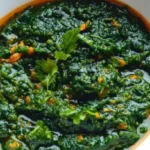
Pumpkin Leaves (Delicious traditional Muboora)
- Total Time: 17 minutes
- Yield: 2 servings 1x
- Diet: Vegetarian
Description
Discover the incredible versatility of pumpkin leaves! From soups to stir-fries, learn how to cook these nutrient-packed greens with simple, tasty recipes.
Ingredients
- 2 cups of fresh pumpkin leaves (young and tender)
- 1 tbsp olive oil
- 2 cloves of garlic, minced
- 1 small onion, sliced
- 1 tsp soy sauce
- 1/2 tsp chili flakes (optional)
- Salt and pepper to taste
Instructions
- Wash the pumpkin leaves thoroughly and remove any tough veins.
- Blanch the leaves in boiling water for 2–3 minutes, then transfer them to an ice bath.
- Heat olive oil in a skillet over medium heat. Add minced garlic and sliced onions, sautéing until fragrant.
- Add the blanched pumpkin leaves to the skillet, stirring gently.
- Season with soy sauce, chili flakes, salt, and pepper. Cook for 5–7 minutes.
- Serve warm as a side dish or over steamed rice.
Notes
- For less bitterness, use only young leaves.
- Adjust seasoning based on your taste preferences.
- Pair with proteins like chicken or fish for a complete meal.
- Prep Time: 10 minutes
- Cook Time: 7 minutes
- Category: Lunch
- Method: Sautéing
- Cuisine: Global
Nutrition
- Serving Size: 1 cup
- Calories: 120
- Sugar: 2g
- Sodium: 300mg
- Fat: 8g
- Carbohydrates: 8g
- Fiber: 3g
- Protein: 3g
Keywords: Pumpkin leaves recipe, sautéed pumpkin leaves, healthy lunch ideas, quick recipes, nutritious greens
Pumpkin leaves are truly one of nature’s hidden gems, offering a combination of exceptional nutrition, culinary versatility, and cultural significance. For centuries, they’ve been a staple in traditional dishes across Africa, Asia, and the Caribbean, proving their enduring appeal and value in global cuisines. Whether you’re seeking a new superfood to boost your diet, experimenting with fresh ingredients in the kitchen, or diving into sustainable home gardening, pumpkin leaves are a fantastic option.
Their nutrient-rich profile makes them a powerhouse addition to meals, supporting everything from bone strength to immune health. And let’s not forget their impressive versatility—they’re perfect for hearty stews, quick stir-fries, or even refreshing smoothies. Beyond their flavor and nutrition, these leaves also bring the joy of connection to tradition, culture, and community, reminding us that simple, natural ingredients often hold the most value.
For home cooks, pumpkin leaves are a gateway to creativity. Imagine wowing your family with a West African Egusi soup, impressing guests with a Thai-inspired stir-fry, or starting your day with a nutrient-packed pumpkin leaf smoothie. The possibilities are endless, limited only by your imagination. Even better, growing your own pumpkin leaves adds a rewarding layer to the experience. Few things are as satisfying as harvesting fresh greens straight from your garden and turning them into delicious meals.
And if you’re wondering about storage, there’s no need to worry—pumpkin leaves can easily be frozen or dehydrated, ensuring you have a stash of nutrient-dense greens ready to use year-round. Plus, their minimal environmental impact and contribution to sustainable farming practices make them a smart choice for anyone looking to live a greener lifestyle.
So, why not give pumpkin leaves a try? Head to your local market or garden store, and embrace the opportunity to explore their unique flavors and benefits. Whether you’re a seasoned foodie, a curious beginner, or a gardener looking to maximize your harvest, pumpkin leaves are your next culinary adventure waiting to happen.
Take the plunge, experiment with recipes, and see for yourself how this underrated ingredient can elevate your meals, improve your health, and connect you to a world of culinary traditions. Happy cooking and gardening!
